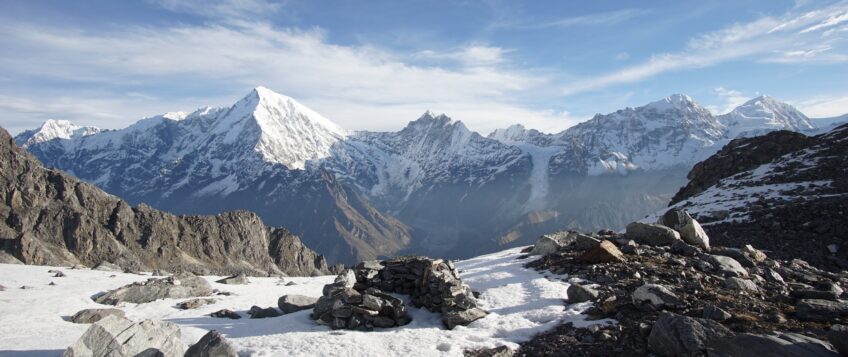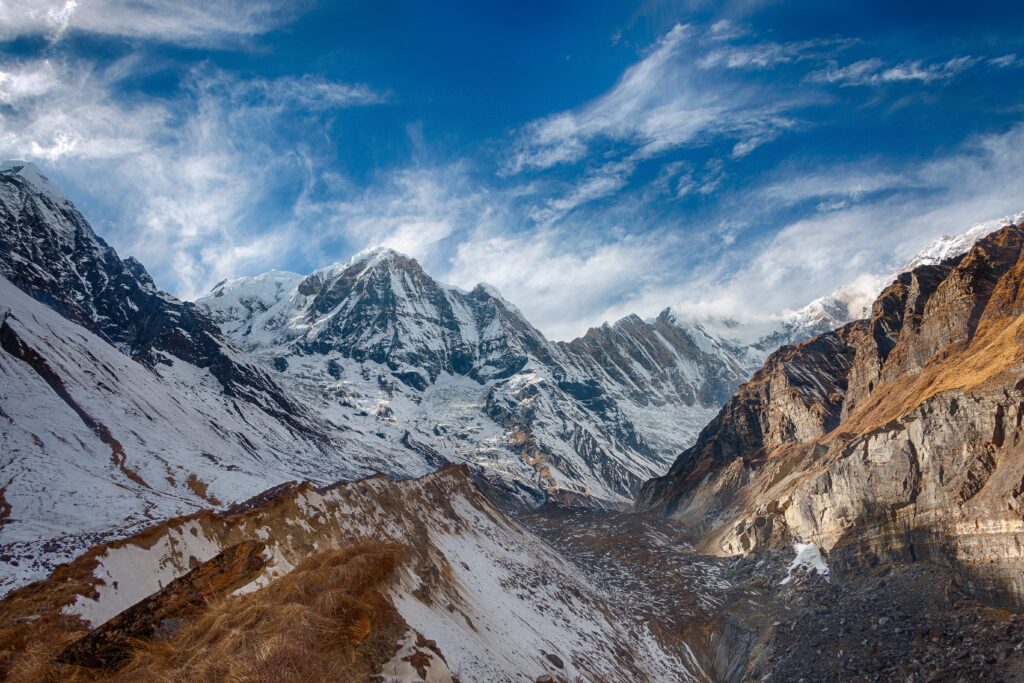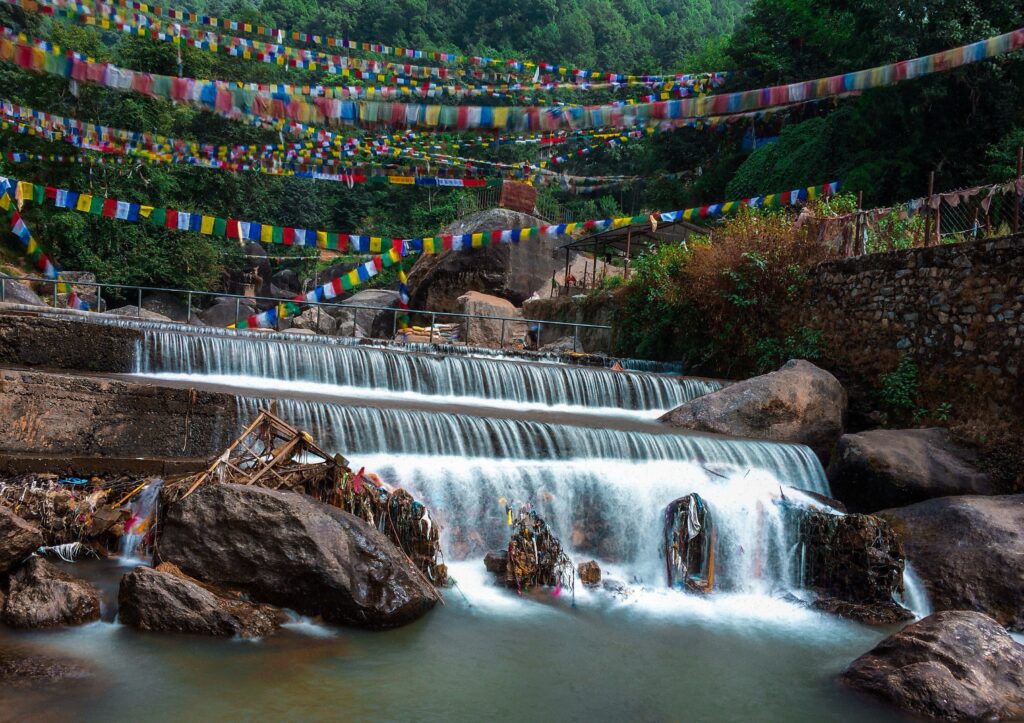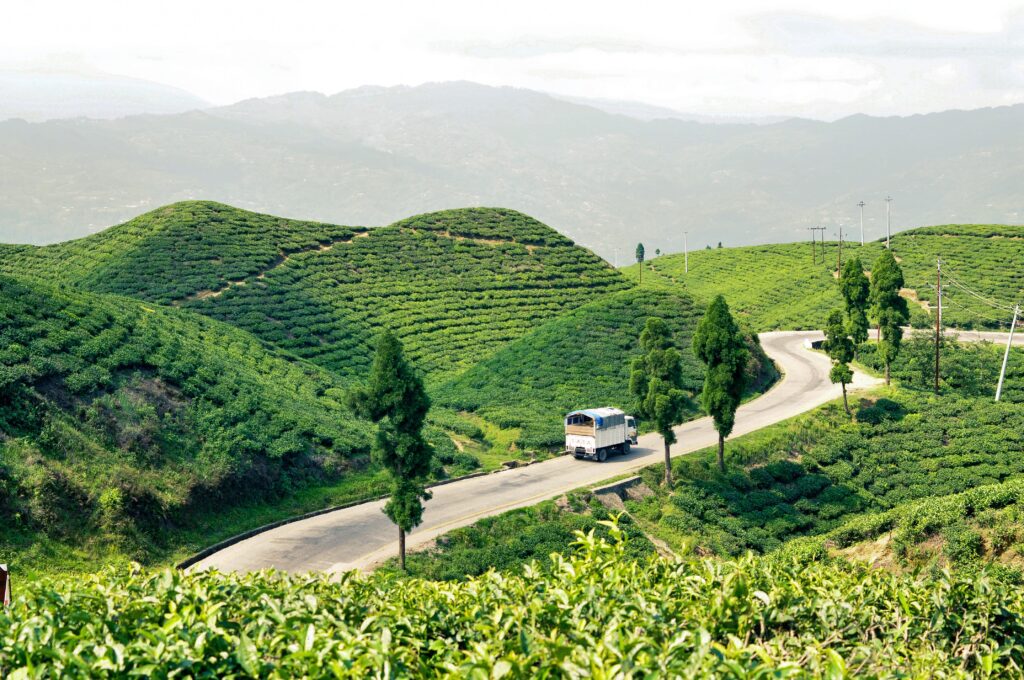Nepal Through Tourism

Reviving the Land of the Himalayas
The COVID-19 pandemic brought the world to a standstill, severely impacting global tourism. Nepal, a country renowned for its majestic Himalayas, rich culture, and spiritual heritage, was no exception. With the pandemic now receding, the question arises: How can Nepal revive its tourism sector and reclaim its position as a top global destination?
This blog explores the potential of sustainable tourism in Nepal, its cultural and natural treasures, and how the country can leverage its unique offerings to attract travelers while preserving its environment and heritage.
The Impact of COVID-19 on Nepal’s Tourism
Before the pandemic, Nepal was thriving as a tourist hotspot. In 2019, the country welcomed 1.19 million foreign visitors, with ambitious plans to attract 2 million in 2020 through the “Visit Nepal” campaign. However, the pandemic forced the government to cancel the campaign, leading to a significant decline in tourism in 2020 and 2021.
The good news? Nepal is slowly recovering. By June 2022, the country reported 237,670 foreign visitors, signaling a gradual revival. But to fully recover, Nepal must adopt innovative strategies that align with global travel trends and prioritize sustainability.
Why Sustainable Tourism is the Answer
Sustainable tourism is not just a buzzword; it’s a necessity for Nepal. This approach focuses on:
-
Preserving natural resources
-
Empowering local communities
-
Promoting cultural heritage
-
Minimizing environmental impact
By embracing sustainable tourism, Nepal can:
-
Generate foreign exchange
-
Create employment opportunities
-
Showcase its rich culture, heritage, and spirituality
-
Ensure long-term economic and social development.
Nepal’s Natural and Spiritual Treasures
Nepal is a land of unparalleled beauty and spiritual significance. From towering peaks to sacred rivers, every element of nature here is revered. Let’s explore some of Nepal’s most iconic destinations and their cultural importance.
The Sacred Himalayas
The Himalayas are not just a trekker’s paradise; they are deeply spiritual. Here are some of the most revered peaks:
-
Mount Everest (Sagarmatha): Known as the “Head of the Sky” in Nepali and “Goddess Mother of Mountains” in Tibetan, Everest holds immense spiritual value for the Sherpa community.
-
Mount Kanchenjunga: Worshiped as a resident god and protector by the Bhutias, Lepchas, and Sherpas, this peak is also believed to be home to the mythical Yeti.
-
Mount Manaslu: Derived from Sanskrit, meaning “Mountain of Spirits,” it is a symbol of Nepal’s spiritual connection with nature.
-
Mount Annapurna: Meaning “Full of Food” in Sanskrit, this peak is associated with Goddess Lakshmi, the deity of prosperity.
Sacred Lakes, Rivers, and Waterfalls
Nepal’s water bodies are considered holy and are integral to its cultural fabric:
-
Kali Gandaki, Bagmati, and Sun Koshi: These rivers are revered for their spiritual significance.
-
-
Boudhanath Stupa and Swayambhunath Stupa: Iconic symbols of Buddhism.
-
Lumbini Peace Park: The birthplace of Gautam Buddha.
-
Janaki Mandir and Maya Devi Temple: sacred sites for Hindus.
Gokyo Lakes and Shey Phoksundo: These high-altitude lakes are not only Ramsar sites but also sacred places for locals.
UNESCO World Heritage Sites
Nepal is home to several UNESCO World Heritage Sites that attract tourists and pilgrims alike:
-
The Role of Culture and Heritage in Tourism
Nepal’s culture is as diverse as its geography. From ancient temples to vibrant festivals, the country offers a unique blend of traditions and spirituality.
Temples and Pilgrimage Sites
-
Muktinath: A sacred site for both Hindus and Buddhists.
-
Pathivara and Manakamana: Popular pilgrimage destinations.
-
Halesi Mahadev and Budhanilkantha: Revered for their religious significance.
Sacred Flora and Fauna
-
Pipal and Banyan Trees: Considered sacred in Hinduism and Buddhism.
-
Rudrakshya Trees: Known for their spiritual and medicinal value.
Sustainable Tourism: A Path to Economic and Social Development
Sustainable tourism is not just about preserving nature; it’s about creating a balance between development and conservation. Here’s how it benefits Nepal:
Economic Benefits
-
Job Creation: Empowers local communities and workers in the tourism sector.
-
Foreign Exchange: Boosts the country’s economy through increased tourist spending.
Environmental Benefits
-
Resource Conservation: Promotes the optimal use of natural resources.
-
Eco-friendly Practices: reduces the negative impact on the environment.
Cultural Benefits
-
Heritage Preservation: Helps protect and promote Nepal’s rich cultural legacy.
-
Community Empowerment: Encourages local participation in tourism activities.
Transform Yourself Through Sustainable Tourism in Nepal
Nepal is more than just a destination; it’s an experience that transforms you. Whether you’re seeking adventure, spirituality, or cultural immersion, Nepal has it all. By choosing sustainable tourism, you not only enrich your own life but also contribute to the preservation of this beautiful country.
Conclusion
Nepal’s tourism sector has the potential to bounce back stronger than ever. By embracing sustainable practices and highlighting its unique cultural and natural treasures, Nepal can attract travelers from around the world while ensuring the well-being of its people and environment.
So, pack your bags and embark on a journey to Nepal—a land where nature, culture, and spirituality come together in perfect harmony. Let’s revive Nepal through tourism, the sustainable way!
Post a comment
You must be logged in to post a comment.




